Dr. Christopher Ramos, conductor
October 4, 2023
7:00 p.m.
There is a Russian word, drobnost’, that translates roughly to ‘splinteredness’ (musicologist Richard Taruskin uses that word; Google translates it to ‘fractionality’). It is a state of being—a feeling of being broken apart, of having discreet fractions of the whole occurring simultaneously. Holly’s work, which opens our concert, might be the best illustration of this concept, where melodies and forms are broken apart, seemingly abandoned for something entirely different, only to be resumed later right where it was left off. As the work progresses, you might begin to feel like you are listening to multiple pieces at once, where different blocks of sound throw each other into relief.
But there is a deeper thread of splinteredness throughout the concert, one that reflects much of what I feel as I contemplate the conflicts and struggles we are currently experiencing as a society. It seems that no matter how hard we try, where there are humans, there is damage. But that is also not the entire story, because often where there are humans, there is also healing. This strange paradox can be seen in our music—Can a destructive wildfire create something beautiful? Can a 20th Century English melody sound like it both belongs in the 20th Century and in the 18th Century at the same time? Can the Lord’s Prayer and a text by a Buddhist monk not only both have the same plea, but also the same solution to our human paradox (and did Bach already figure that out too)?
A splinter is also a kind of paradox. When something foreign pierces my skin—a piece of wood, a mosquito’s proboscis, a slipped knife when cutting vegetables—my initial reaction is usually…dismay (or some more aggressive form of it). However, splinters can also bring healing—a surgeon’s scalpel, a stint for the heart, a shot filled with the MMR vaccine. I don’t know exactly what that means for our society, but it does bring me both caution and hope.
I think most people would agree with me that America, and possibly the world, and possibly even Utah County, live in a state of splinteredness. Our democracy was founded on the hope of Hegel’s dialectic, that opposites would synthesize into something greater (after a struggle of course). I suppose the question is what we do with that state of being. How do find each other, how do we build something together, how do respect each other’s position and still find something better together? I had the privilege of meeting David Maslanka several years ago before he passed, and I am confident in his confidence that music was one way forward. If we could just pay attention to it…and to each other.
So on the surface, this is a concert that presents familiar forms and tropes from new angles and showcases surprising shadows. But at a deeper level, we ask ourselves, what divides light from dark, left from right, right from wrong, tradition from innovation, good from evil, awesome from awful? And whatever that thing is that splinters opposites, how do we use it in the pursuit of the sublime?
Splinter
In this context, the word "splinter" means to break into small, sharp fragments, and refers to the way in which the piece is structured as a type of mosaic or stylistic patchwork. Many sections of the piece feature instrument sounds breaking or distorting in some way -- whether this be in the extremes of register, wild glissandos, or crunchy chords.
The other meaning of "splinter" is as a foreign object within the body. This acts as a metaphor for my experimentation with some lighter, delicate moments, which are not always part of my musical sound world.
- Program Note by composer
Ash
I never saw snowfall as a child growing up in Southern California; it was more a phenomenon that I saw in cartoons or read in children’s books. I did, however witness my first ash-fall when I was in elementary school. I looked up into the clouded sky and saw specks of ash falling from it. Excited but puzzled, I looked to my elementary school teacher during recess and held out my hand. “Oh, that’s ash from the wildfires,” she said. At that time, I couldn’t comprehend how an enormous forest fire could create a small flurry of ash-flakes. Now I have the ominous understanding that something so magical and beautiful comes from something so powerful and destructive.
-Program Note by the composer
Handel in the Strand
My title was originally “Clog Dance.” But my dear friend Willim Gair Rathbone (to whom the piece is dedicated) suggested the title “Handel in the Strand,” because the music seemed to reflect both Handel and English musical comedy (the “Strand,” a street in London, is the home of London musical comedy) as if jovial old Handel were careening down the Strand to the strains of modern English popular music.
- Program Note by composer
Give Us This Day
The words “Give us this day” are, of course, from the Lord’s Prayer, but the inspiration for this music is Buddhist. I have recently read a book by the Vietnamese Buddhist monk Thich Nhat Hanh (pronounced “Tick Not Hahn”) entitled For a Future to be Possible. His premise is that a future for the planet is only possible if individuals become deeply mindful of themselves, deeply connected to who they really are. While this is not a new idea, and something that is an ongoing struggle for everyone, in my estimation it is the issue for world peace. For me, writing music, and working with people to perform music, are two of those points of deep mindfulness.
Music makes the connection to reality, and by reality I mean a true awakeness and awareness. Give Us This Day gives us this very moment of awakeness and aware aliveness so that we can build a future in the face of a most dangerous and difficult time.
I chose the subtitle “Short Symphony for Wind Ensemble” because the music isn’t programmatic in nature. It has a full-blown symphonic character, even though there are only two movements. The music of the slower first movement is deeply searching, while that of the highly energized second movement is at times both joyful and sternly sober. The piece ends with a modal setting of the choral melody Vater Unser in Himmelreich (Our Father in Heaven), No. 110 from the 371 four-part chorales by Johann Sebastian Bach.
-Program Note by the composer
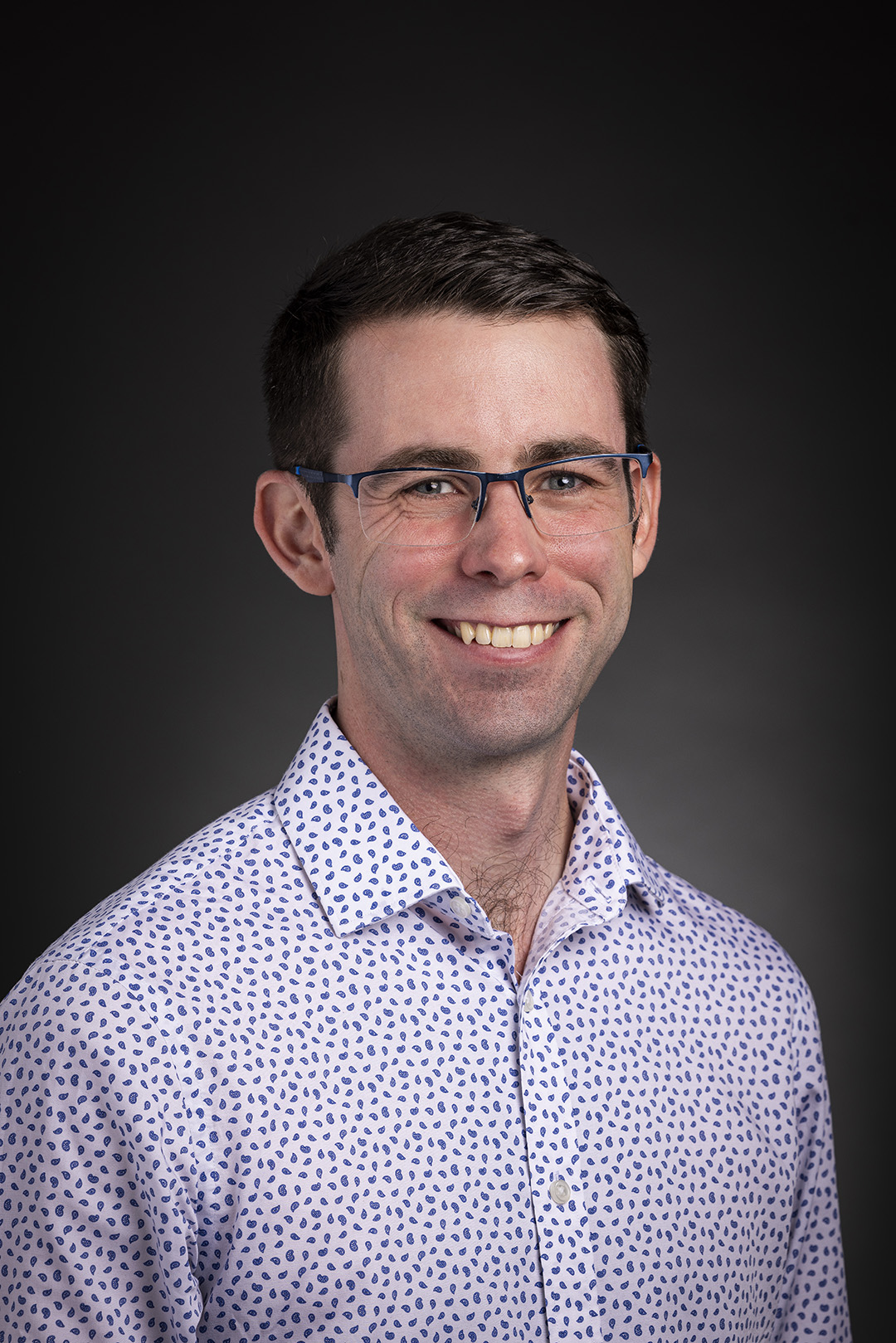
Chris Ramos is currently serving as Director of Bands and Assistant Professor of Music at Utah Valley University in Orem, Utah. He conducts the UVU Wind Symphony, the Screamin’ Green Pep Band, and directs instrumental studies within the music education area.
He received the DMA in instrumental conducting at The Hartt School, studying with Glen Adsit and Edward Cumming. While at Hartt, he assisted in conducting Hartt's instrumental performing ensembles and the Greater Hartford Youth Wind Ensemble, and as part of the adjunct faculty he taught courses for graduates and undergraduates in conducting, brass methods, diversity and belonging, jazz pedagogy, and in the core music theory sequence. Before Hartt, Chris served as a band director at Dalat International School in Penang, Malaysia where he taught Western classical and jazz music in performing and theory courses across grades 6-12, and his students were invited to perform in international festivals across Southeast Asia.
He is also an active scholar working at the intersection of musicology, wind band studies, and music education. In 2022 he received the Goldstein Award from the University of Hartford, and in 2016 he received the Joanne Kealinohomoku Prize from the the Society of Ethnomusicology Southwest for scholarship combining these interests. He holds degrees from the University of New Mexico where he studied with Eric Rombach-Kendall, and from Texas A&M University-Commerce where he studied with Phillip Clements (conducting), Luis Sanchez (piano), and Mike Morrow (horn).
In addition to his conducting, researching, and teaching, he actively performs both on the French horn and at the keyboard. He has had the opportunity to work and play closely with many incredible artists around the world in both classical and jazz idioms including the likes of Stephen Hough, Wynton Marsalis, Marshall Gilkes, Susan Botti, Allen Vizutti, Bill Watrous, the Boston Brass, Lucy Shelton, Kevin Day, and David Maslanka. He has both produced and performed on records for the Naxos and Summit record labels, and he has performed in and conducted ensembles in concert halls, stages, forests, and patios across the United States and Asia. An avid supporter of new music, he has been part of a number of commissioning projects for solo horn, chamber ensembles, and wind ensembles. He is an active member in the College Band Directors National Association, National Band Association, Utah Bandmasters Association, Utah Music Educators Association, American Musicological Society, Society for Music Theory, and National Association for Music Education.
Dr. Christopher Ramos
Conductor
|
Flute Emily Gabbitas* clarinet Bob Gabbitas* bass clarinet Hannah Brown
Oboe Emily Adams* Bassoon Andrew Apgood* saxophone trumpet Brandon Ard |
Horn Rachel Colton Trombone euphonium Michael Lenderman
TUBA PERCUSSION STRING BASS PIANO |
|
|
* denotes section principal |
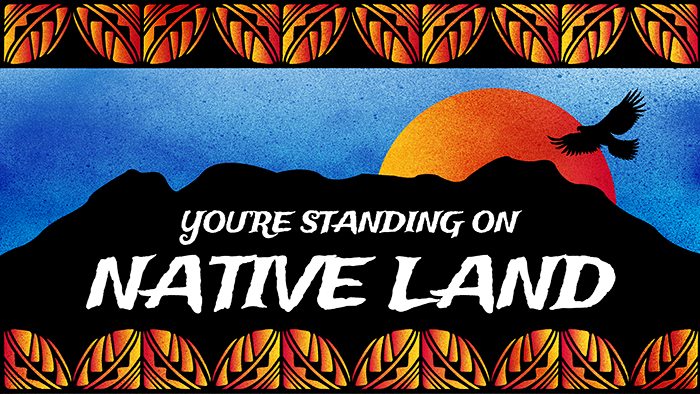
Utah Valley University acknowledges that we gather on land sacred to all Indigenous people who came before us in this vast crossroads region. The University is committed to working in partnership—as enacted through education and community activities—with Utah’s Native Nations comprising: the San Juan Southern Paiute, Paiute Indian Tribe of Utah, Uintah & Ouray Reservation of the Northern Ute, Skull Valley Goshute, Confederated Tribes of the Goshute Reservation, Northwestern Band of Shoshone Nation, Hopi Tribe, Navajo Nation, Ute Mountain Ute-White Mesa Community, and urban Indian communities. We recognize these Native Nations and their continued connections with traditional homelands, mountains, rivers, and lakes as well as their sovereign relationships with state and federal governments. We honor their collective memory and continued physical and spiritual presence. We revere their resilience and example in preserving their connections to the Creator and to all their relations, now and in the future.
With this statement comes responsibility and accountability. We resolve to follow
up with actionable items to make the School of the Arts at UVU and The Noorda Center
for the Performing Arts an inclusive, equitable, and just space for all. There is
much work to be done, and we are committed to putting these words into practice.
Artwork by Shane Walking Eagle (Sisseton Dakota).
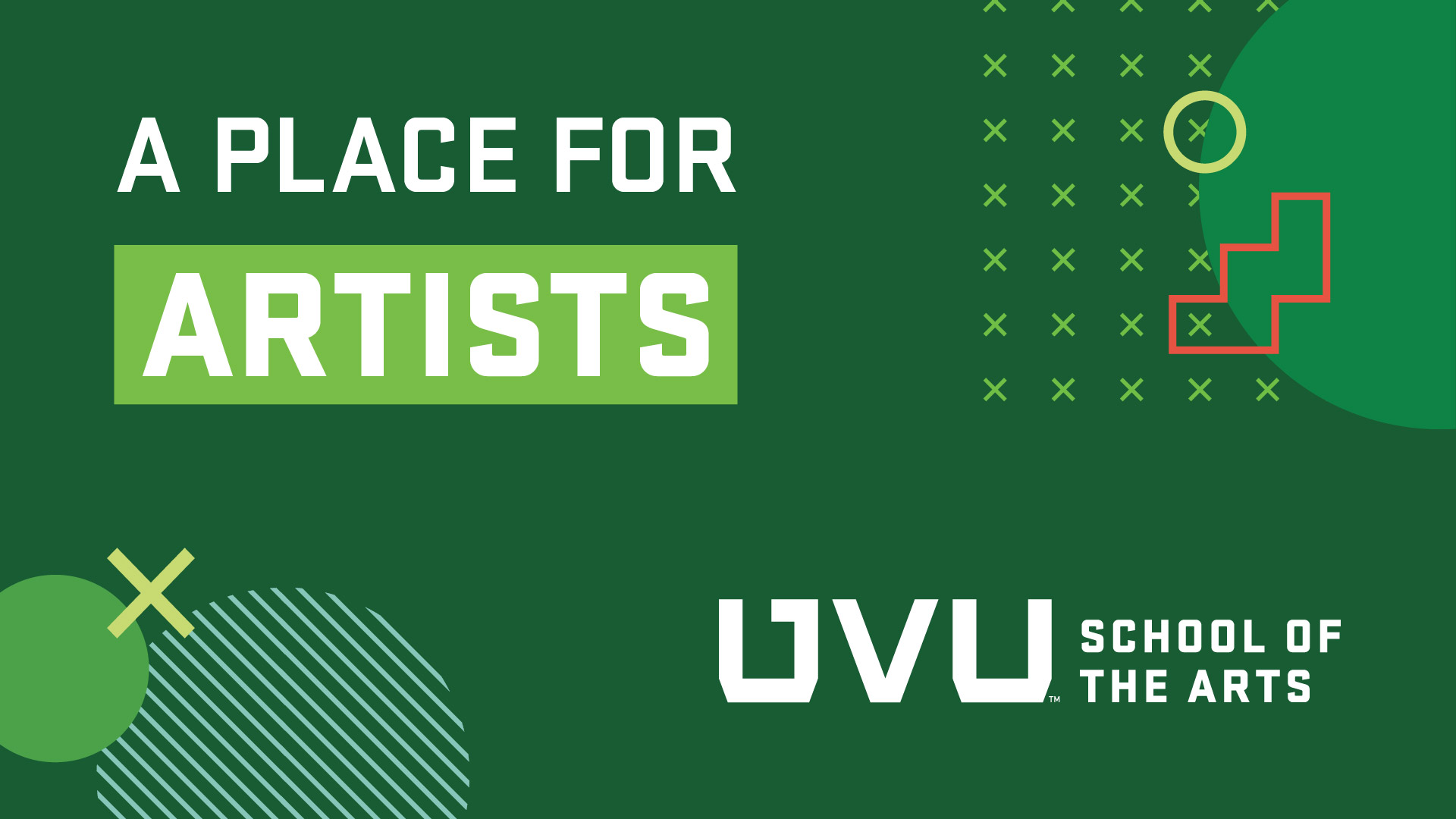
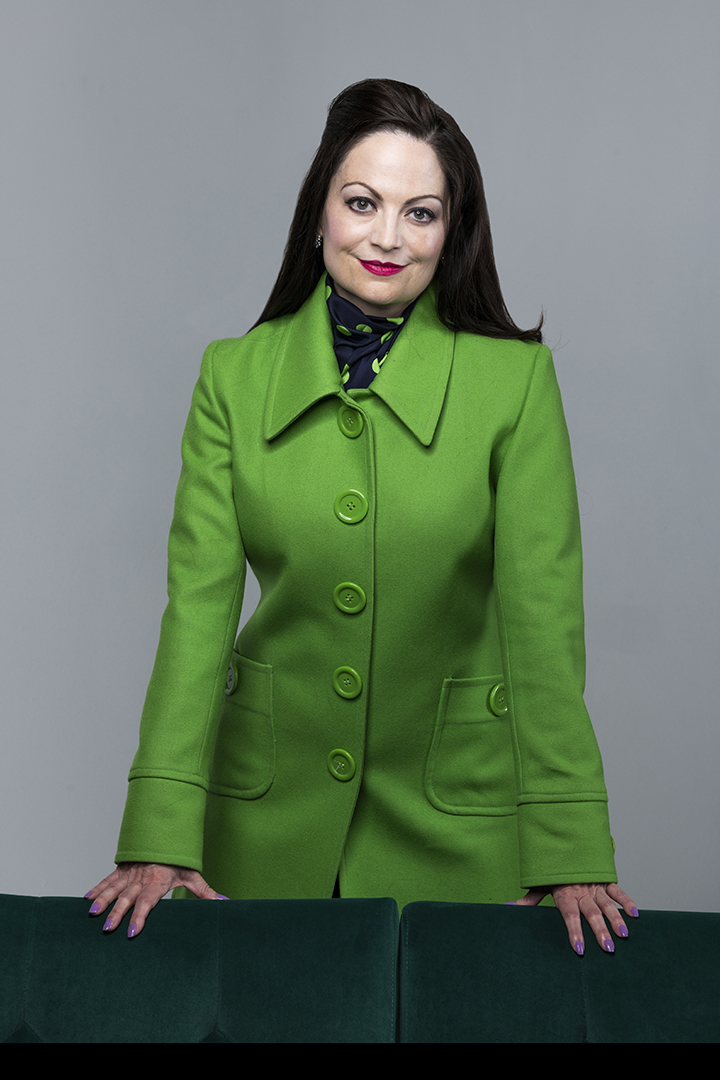
Our mission is to produce and present artistic excellence, which would not be possible without the generous support of our sponsors. We thank them and express our deep gratitude to all patrons, supporters, and friends of The Noorda.
The arts possess the unparalleled power to inspire, educate, liberate, and transform. They elevate moments, mark milestones, soften edges, and generate profound meaning. Experience the beauty and wonder of the arts with us this season at The Noorda and begin at once to live!
Courtney R. Davis, J.D., M.A.
Dean, School of the Arts
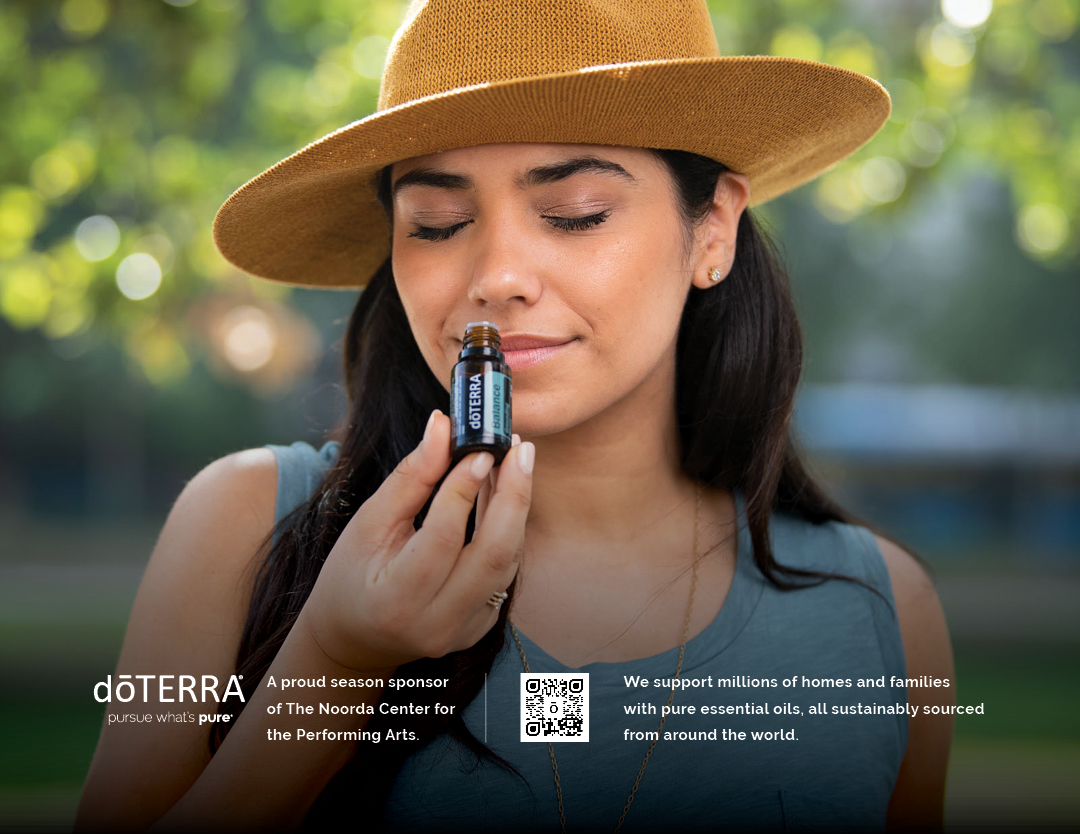
Department Chair
JEFFREY O'FLYNN
Administrative Assistant
CHRIS GINES
Chamber Choir/Deep Green
REED CRIDDLE
Emerald Singers
CHERILYN WORTHEN
Concert Choir
DEMAREE BROWN
Opera Coordinator
ISAAC HURTADO
Voice Coordinator
MELISSA HEATH
Private Voice Instructors
AUBREY ADAMS-MACMILLAN
CECILY BILLS
ADRIENNE BRAUN
DEMAREE BROWN
ANTHONY BUCK
REED CRIDDLE
MELISSA HEATH
CHRISTOPHER HOLMES
ISAAC HURTADO
CONSTANCE JENSEN
SERENA KANIG BENISH
EMILY MERRELL
JOSEPH MOORE